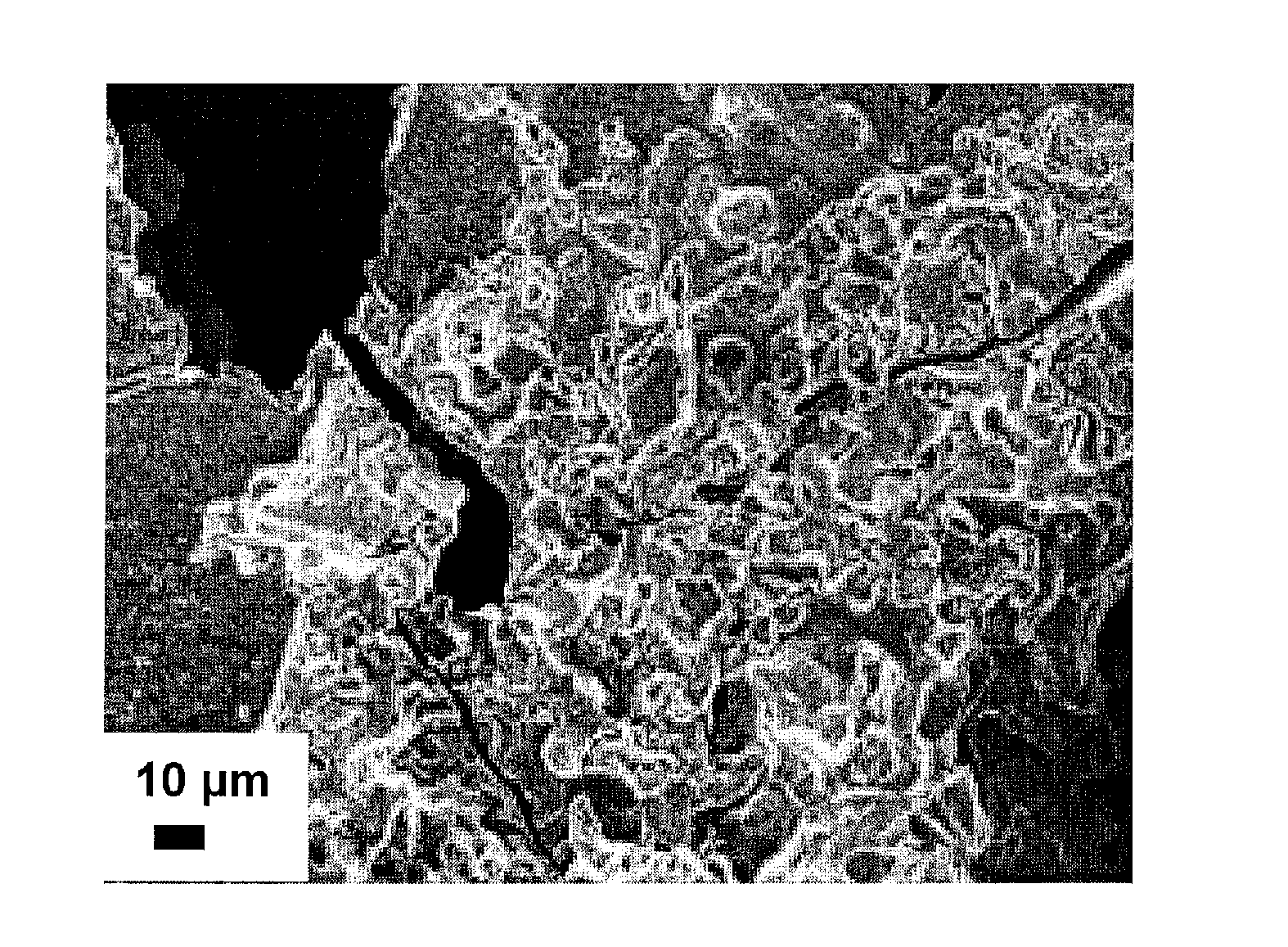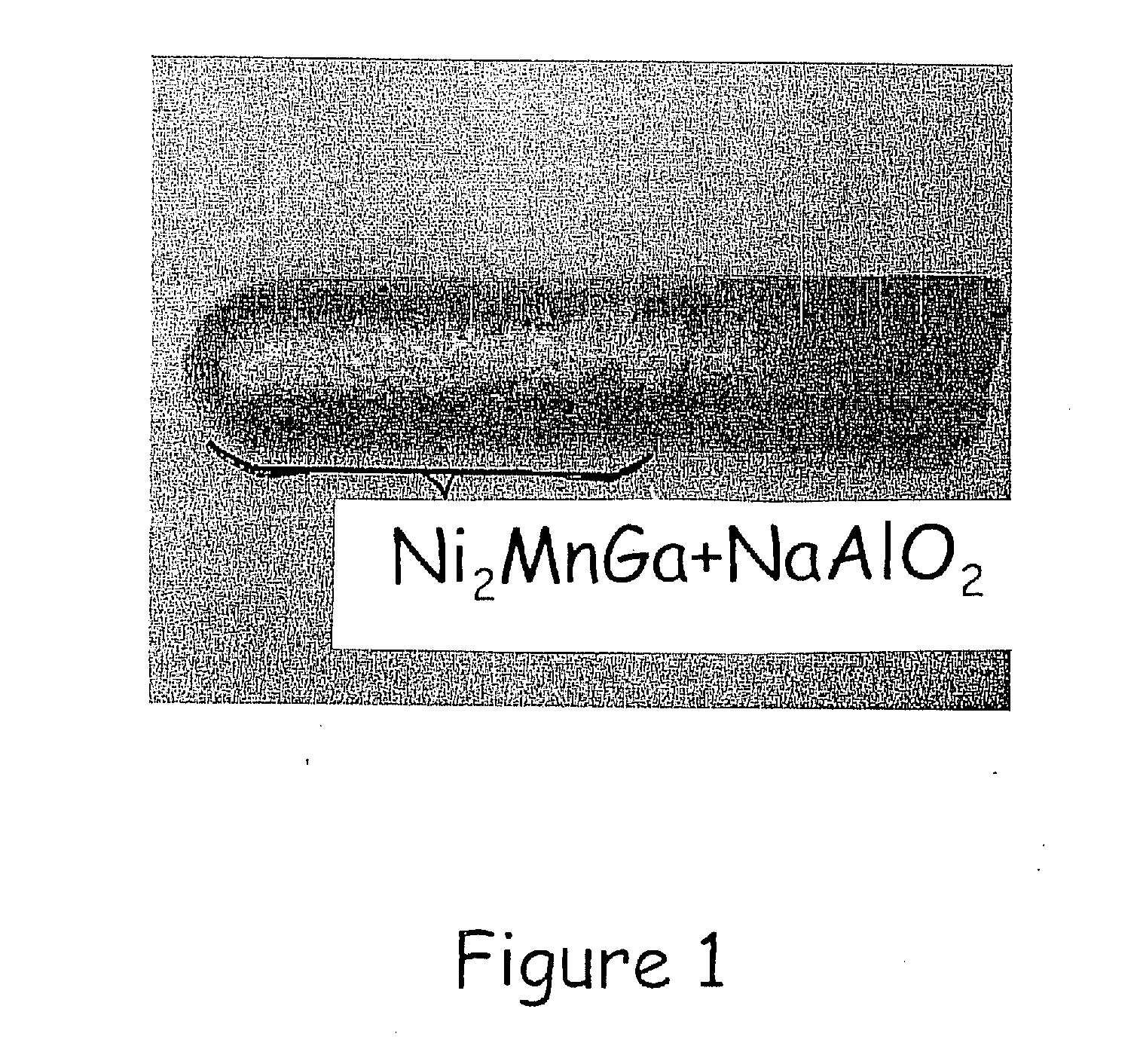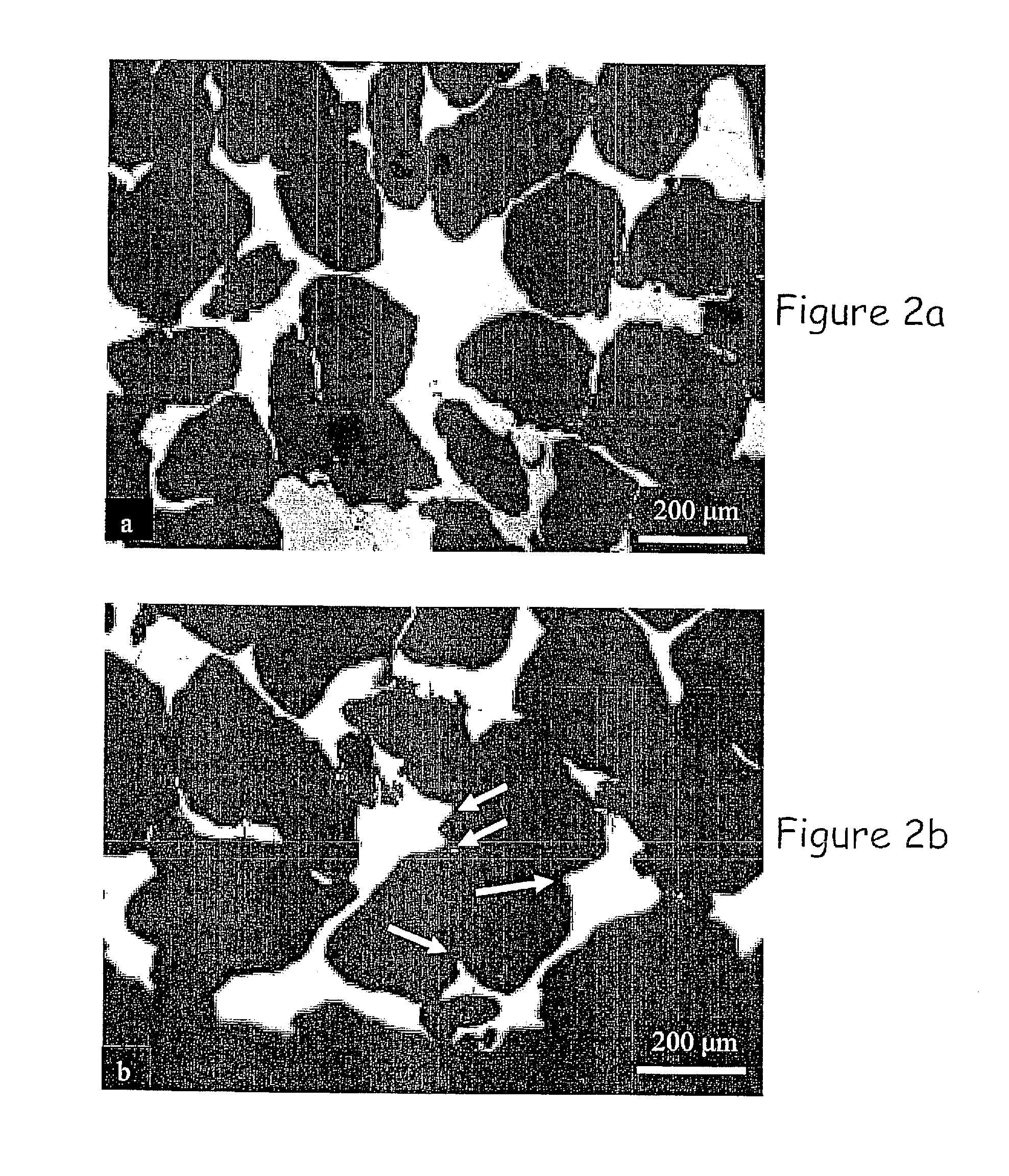Polycrystalline foams exhibiting giant magnetic-field-induced deformation and methods of making and using same
a polycrystalline foam and magnetic field technology, applied in the field of porous polycrystalline magnetic materials, can solve the problems of difficult single crystal growth, high cost, slow growth, etc., and achieve the effects of reducing the constraints of twin boundary motion, and dramatic increase in mfis
- Summary
- Abstract
- Description
- Claims
- Application Information
AI Technical Summary
Benefits of technology
Problems solved by technology
Method used
Image
Examples
Embodiment Construction
[0040]Referring to the Figures, there are shown several, but not the only, embodiments of the invented porous structure exhibiting large magnetic-field-induced deformation, and several, but not the only, methods for making and using said porous structure. FIGS. 1-10 focus mainly on single-pore-size distribution embodiments of the invention, wherein the single-size pores are large pores. FIGS. 11-26 focus mainly on embodiments of the invention that comprise more than one size of pores, specifically in these examples, two sizes of pores (large and small), and on comparisons between the single-pore-size and multiple-pore-size embodiments.
Large-Pore, Single-Pore-Size Embodiments
[0041]Ni2MnGa replicated foams with open-cell porous structure were processed by the replication technique where a metallic melt is cast into a bed of space-holder materials that is leached out after solidification of the melt, resulting in open porosity replicating the structure of the space-holder. This method ...
PUM
| Property | Measurement | Unit |
|---|---|---|
| pore-size- | aaaaa | aaaaa |
| pore-size- | aaaaa | aaaaa |
| thickness | aaaaa | aaaaa |
Abstract
Description
Claims
Application Information
 Login to View More
Login to View More - R&D
- Intellectual Property
- Life Sciences
- Materials
- Tech Scout
- Unparalleled Data Quality
- Higher Quality Content
- 60% Fewer Hallucinations
Browse by: Latest US Patents, China's latest patents, Technical Efficacy Thesaurus, Application Domain, Technology Topic, Popular Technical Reports.
© 2025 PatSnap. All rights reserved.Legal|Privacy policy|Modern Slavery Act Transparency Statement|Sitemap|About US| Contact US: help@patsnap.com



